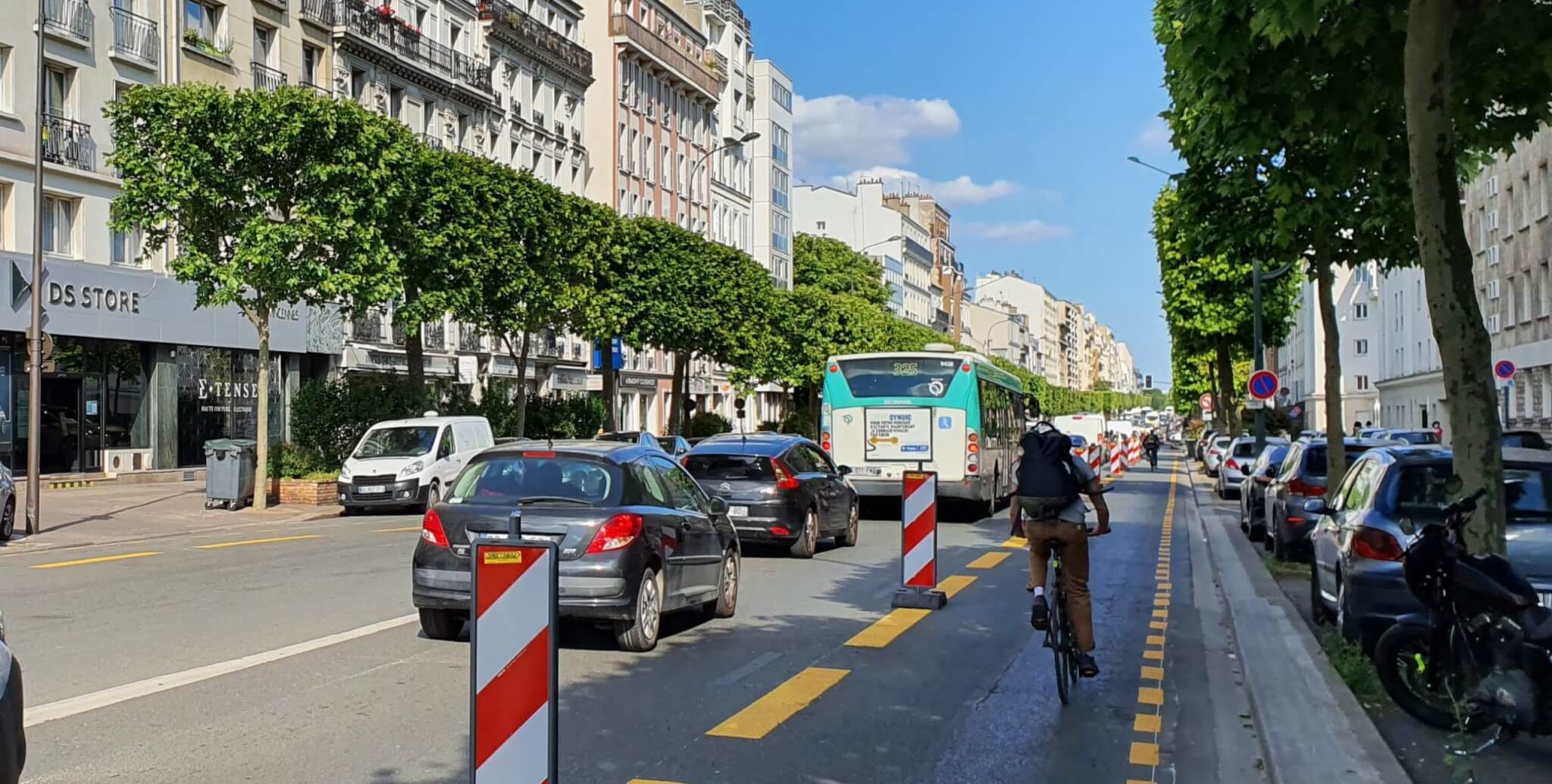“The results are very positive. Between the time it was deconfined and the summer break, the number of people on the trails has continued to increase and testimonies are pouring in from people who have taken to cycling thanks to the temporary trails. We counted up to 5,000 cyclists per day on the Neuilly bridge even though La Défense is still idling because many people remained teleworking before the summer. There is therefore still a large margin for improvement ”, poses Louis Belenfant, director of the Vélo Ile-de-France collective, which brings together around thirty associations and is at the initiative of the RER V which aims to double the main RER axes with cycle paths. The coronapistes, who largely resumed its route, gave a big boost to the project.
“The attendance is excellent on the edge of Paris, in Montreuil, Pantin, Neuilly-sur-Seine, Boulogne… All that was missing were tracks for cyclists to arrive. Going back would be going against the meaning of history! ” It remains to perpetuate and improve security“, Enjoins the director of the collective.
But if in the towns immediately bordering on Paris such as Vincennes, Montreuil … the reception was rather favorable with additional local cycle paths to extend the RER V network, the reluctance of local residents and their elected officials was expressed in the cities un a little less close. This is the case, for example, in Créteil where several cycling facilities have already been dismantled even before the start of the school year.. “It’s a shame because there is also a real dynamic around cycling in Créteil. The bicycle shelves in the surrounding shops have been robbed, the Créteil school bicycle is always full. All the indicators are saying that people will be arriving on the bikes in the next few months. And the university hasn’t even reopened yet, regrets Louis Belenfant. Cities like Créteil have certainly been designed for the car, but is that a reason not to change anything? Maisons-Alfort is not intended to be the freeway town either. There are already more than 1000 cyclists per day on the RD19 in Maisons-Alfort. ”
In Créteil, residents annoyed by traffic jams and businesses that circulate by car do not see things exactly from this angle. At the town hall, letters have accumulated to denounce a counterproductive solution, generating more traffic jams and pollution by preventing the fluid circulation of cars. And residents get annoyed with these lanes reserved for bicycles, sometimes located next to existing cycle paths. A package of complaints which the mayor of the city, Laurent Cathala (PS), has acted as the spokesperson for the Departmental Council, the contracting authority for coronapistes on its departmental roads. And the city councilor to insist on the need “That the expectations of citizens and economic and social actors of the territory be heard and integrated into the reflection.” While the summer period was to be used to initiate micro-local consultations on the different portions of the provisional cycling network, the elected official, who had already passed a motion to assess the relevance of these trails during the City Council of 25 May, began to modify the provisional cycle route, notably at the Pompadour crossroads.
“We had to review the copy at the Pompadour crossroads because there was a problem with access to the business area. The trucks could no longer exit and this generated a traffic jam on the A86. From the month of July, we returned two files between this ring and the central ring of Pompadour ”, explains Pierre Garzon, vice-president of the Departmental Council in charge of transport. Other portions have started to be planed, as on the avenue du Général de Gaulle (strategic artery which connects the public services of the city and the department such as the rectorate, the university, the prefecture …) between the Mondor hospital and the Gi-Fi (rue Saint-Simon) in return for a zone 30. On the D19, the coronapist’s days are also counted because of the already existing narrower track on the sidewalk. As for the development on the RD86, it must also be discussed again, portion by portion.
Long-term diplomatic exercise
Créteil, symbolic because it is the prefecture and university town of the department, is not a unique case, and reflects the more significant difficulties encountered by coronapistes beyond the immediate first ring. In Noisy-le-Grand (Seine-Saint-Denis) also, coronapistes are in the hot seat. Elsewhere in Val-de-Marne, the tracks have been removed on the RD7 at Thiais and Chevilly. “There were too few users of the bike and most of them get on the sidewalk because there is a lower density of pedestrians, which is not the case in Villejuif or the Kremlin-Bicêtre ”, justifies Pierre Garzon. For the department, the deployment of cycle paths is a long-term diplomatic exercise. “We’re going to have to revise the copy but we don’t want to go back to the original state. The challenge is to move forward while maintaining a bond of trust with the cities. We try to maintain a wise dosage ”, summarizes Pierre Garzon.
“Tactical urbanism”
An art of compromise that can be successful. “The Clichy bridge was a tough spot because we had taken two out of the four lanes. We narrowed the tracks slightly in return for physically separating them from the cars by protecting them with concrete and we were thus able to restore a third lane to the cars. It is about doing tactical town planning. What creates the change is the presence of the tracks, so we must not let go and show political courage ”, invites calls Louis Belenfant, recalling that “The mayors have just been re-elected for six years”.
–

